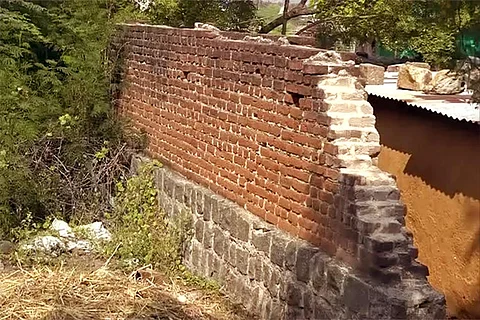

In Tamil Nadu’s Uthapuram, there is a wall that serves as a physical reminder of the caste discrimination that Dalits face from caste Hindus. The wall was built 30 years ago by the Pillaimar community, an OBC caste in the state that wanted to keep out residents belonging to the Devandra Kula Vellalar community from the Mariamman temple.
The reason is that Devendra Kula Vellalar is a Scheduled Caste in Tamil Nadu.
Caste walls were built to keep Dalits out of caste Hindu temples, to prevent Dalit access to roads, pathways and essential services. Though clashes between the two communities have been ongoing for decades, tensions reignited in 2007.
“In 2007, we conducted the temple festival. During that time, they told us not to conduct our rituals on the streets, to keep it within our neighbourhood. We said how can you stop us? We are doing it on the national highways, you are not affected in any way. We left. We complained to the inspector. He came and saw. He supported the Pillaimar community and told us we were wrong. That night they electrified the wall. They put live power on the wall so that anyone who touches the wall will get an electric shock. Two cows were electrocuted by it. After that the protest intensified,” says Ponnaiyan, a member of the Tamil Nadu Untouchability Eradication Forum.
After protests, political parties such as the CPI(M) for involved and in 2008, part of the wall was demolished by the then-DMK government. But even today, some part of the wall remains standing.
“We asked them to break everything but they didn’t. Only 10 feet of the wall has been broken,” Ponnaiyan says.
Recent years have witnessed another wall become a matter of contention between two Dalit castes: the Arunthathiyar and Paraiyar. The wall was built in 2014, and divides 30 Paraiyar families on one side, and 70 Arunthathiyar families on the other. Both Paraiyar and Arunthathiyar are Scheduled Castes in Tamil Nadu.
While members of the Arunthathiyar community have been protesting the presence of the wall and calling for its complete demolition, some Dalit leaders say that the matter is land issue between two communities and should not be seen as a caste wall.